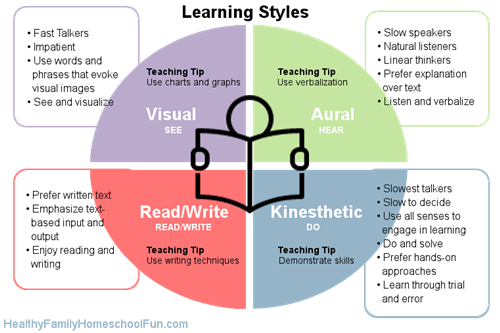Exceptional Children
-
Hello Paw Creek Families,
Welcome to the Exceptional Children webpage of Paw Creek Elementary School! Below you will find links that will be beneficial to understanding our program and what we have to offer your child. Please take time and explore the helpful resources we have provided for you. We are here to serve you and provide the best services for your child. Please contact the school for questions or concerns.
Warm Regards,
The EC Team
Why Learning Styles? Understand the basis of learning styles
Your learning styles have more influence than you may realize. Your preferred styles guide the way you learn. They also change the way you internally represent experiences, the way you recall information, and even the words you choose. We explore more of these features in this chapter.
Research shows us that each learning style uses different parts of the brain. By involving more of the brain during learning, we remember more of what we learn. Researchers using brain-imaging technologies have been able to find out the key areas of the brain responsible for each learning style.
For example:
- Visual: The occipital lobes at the back of the brain manage the visual sense. Both the occipital and parietal lobes manage spatial orientation.
- Aural: The temporal lobes handle aural content. The right temporal lobe is especially important for music.
- Verbal: The temporal and frontal lobes, especially two specialized areas called Broca�s and Wernicke�s areas (in the left hemisphere of these two lobes).
- Physical: The cerebellum and the motor cortex (at the back of the frontal lobe) handle much of our physical movement.
- Logical: The parietal lobes, especially the left side, drive our logical thinking.
- Social: The frontal and temporal lobes handle much of our social activities. The limbic system (not shown apart from the hippocampus) also influences both the social and solitary styles. The limbic system has a lot to do with emotions, moods and aggression.


